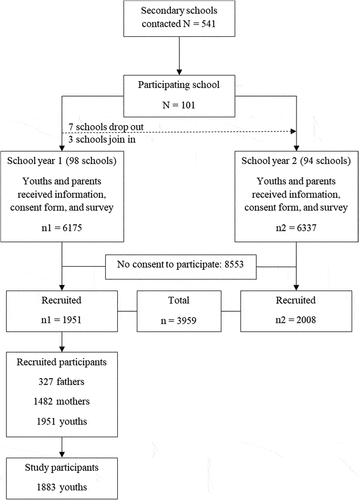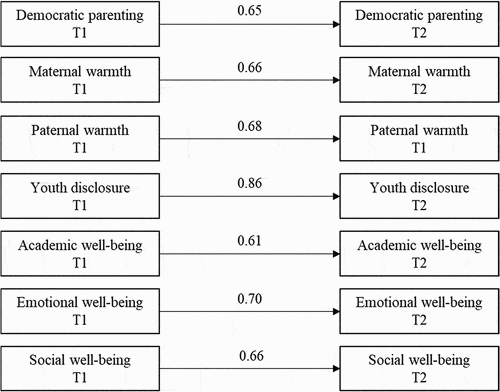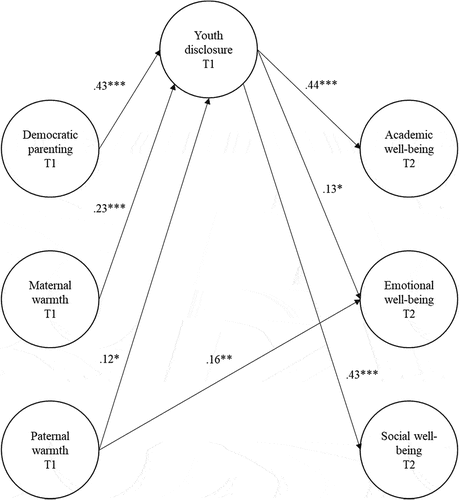Figures & data
Figure 1. Participant recruitment process of the KUPOL project. Adapted from Galanti et al. (Citation2016).

Table 1. Descriptive and comparative statistics for democratic and warm parenting behaviours, youth disclosure, and youth well-being characteristics.
Figure 2. Associations between each factor at T1 (seventh grade) and T2 (eighth grade), all statistically significant at p < .001.

Table 2. Fit indices of measurement models based on confirmatory factor analyses.
Figure 3. Standardised parameter estimates of statistically significant paths for baseline model, * p < .05; ** p < .01; *** p < .001.

Table 3. Indirect associations of baseline model for both boys and girls.
